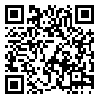BibTeX | RIS | EndNote | Medlars | ProCite | Reference Manager | RefWorks
Send citation to:
URL: http://tumj.tums.ac.ir/article-1-7539-en.html
2- Cancer Research Center, Tehran University of Medical Sciences, Tehran, Iran. ,
It was assumed that the loss of cardiomyocytes is irreversible. The main goal is to develop widely available and clinically applicable treatments for heart diseases. The several studies have showed that the use of stem cells can improve complicacies such as cardiovascular diseases. Stem cells have a potential benefit of the self-renewal and cell differentiation into the cell types that can play an important role in the organogenesis and the embryonic development. In a lifetime, the heart muscle has a population of cardiac stem cells (CSCs) in which a dramatically increase after cardiovascular damages. So far, seven types of CSCs have been discovered with the different molecular phenotype and the cell differentiation potential. In this regard, the proliferation and the differentiation increase of CSCs in the cardiac ischemic areas can be a key factor to improve heart complicacies. Paracrine and/or autocrine factors, the extracellular matrix and the genetic mediators including microRNA can control the function of CSCs. It has clearly been understood that the factors mentioned previously have the ability to improve these complicacies. The differentiation, the survival and the self-renewal of CSCs are largely under the control of factors in the heart microenvironment. Several studies showed that the cytokines and the growth factors play the important role in the proliferation and the migration of CSCs. Taking advantage of these factors together CSCs to repair damaged heart can enhance this method efficiency. This review will discuss the different kinds of CSCs, their molecular phenotype and cardiac regeneration potential in order to improve cardiovascular diseases. It seems that CSCs-based therapy is emerging as a novel approach for myocardial repair over conventional cardiovascular therapies. Therefore, understanding the new aspects on the molecular mechanisms and the signaling pathways involving CSCs is critical for the development of the therapeutic strategies in cardiac patients that would be valuable for researchers in both fields of molecular and clinical cardiology.
| Rights and permissions | |
 |
This work is licensed under a Creative Commons Attribution-NonCommercial 4.0 International License. |





